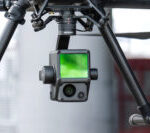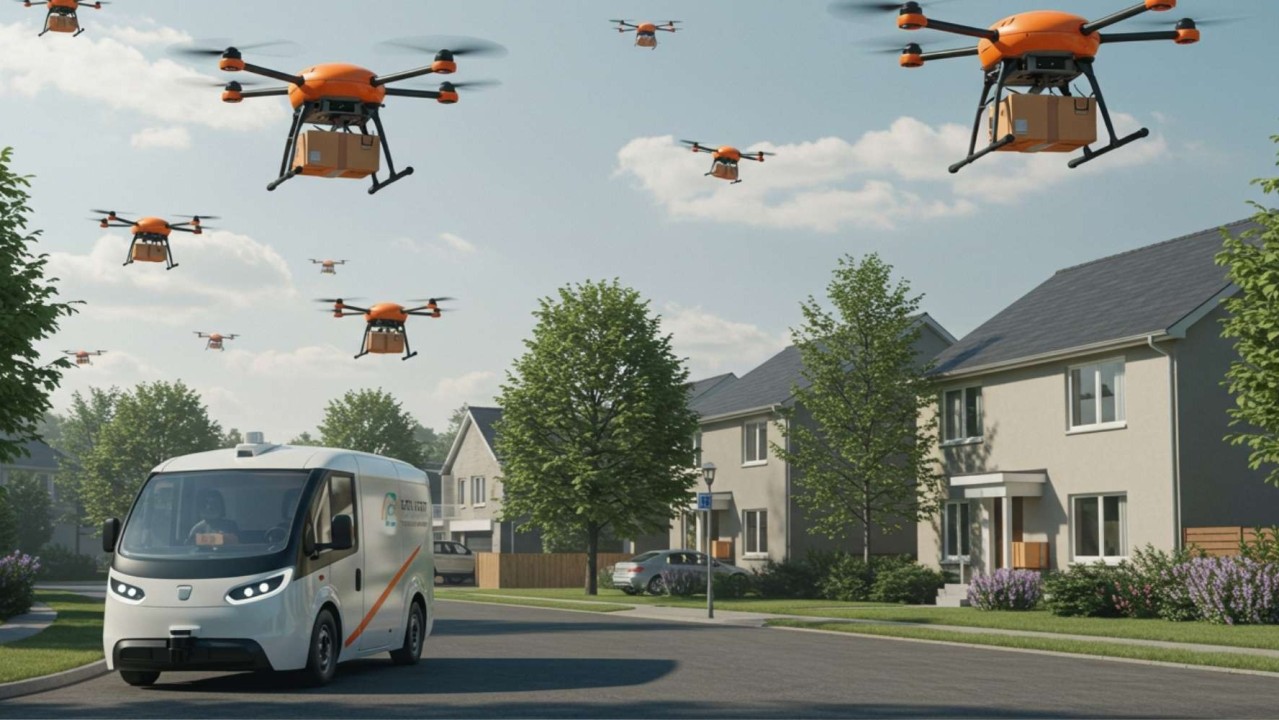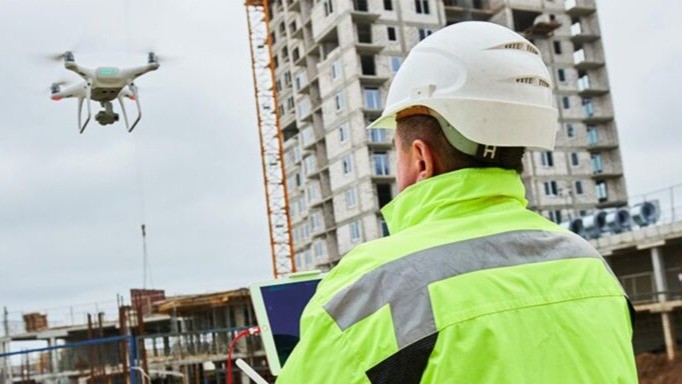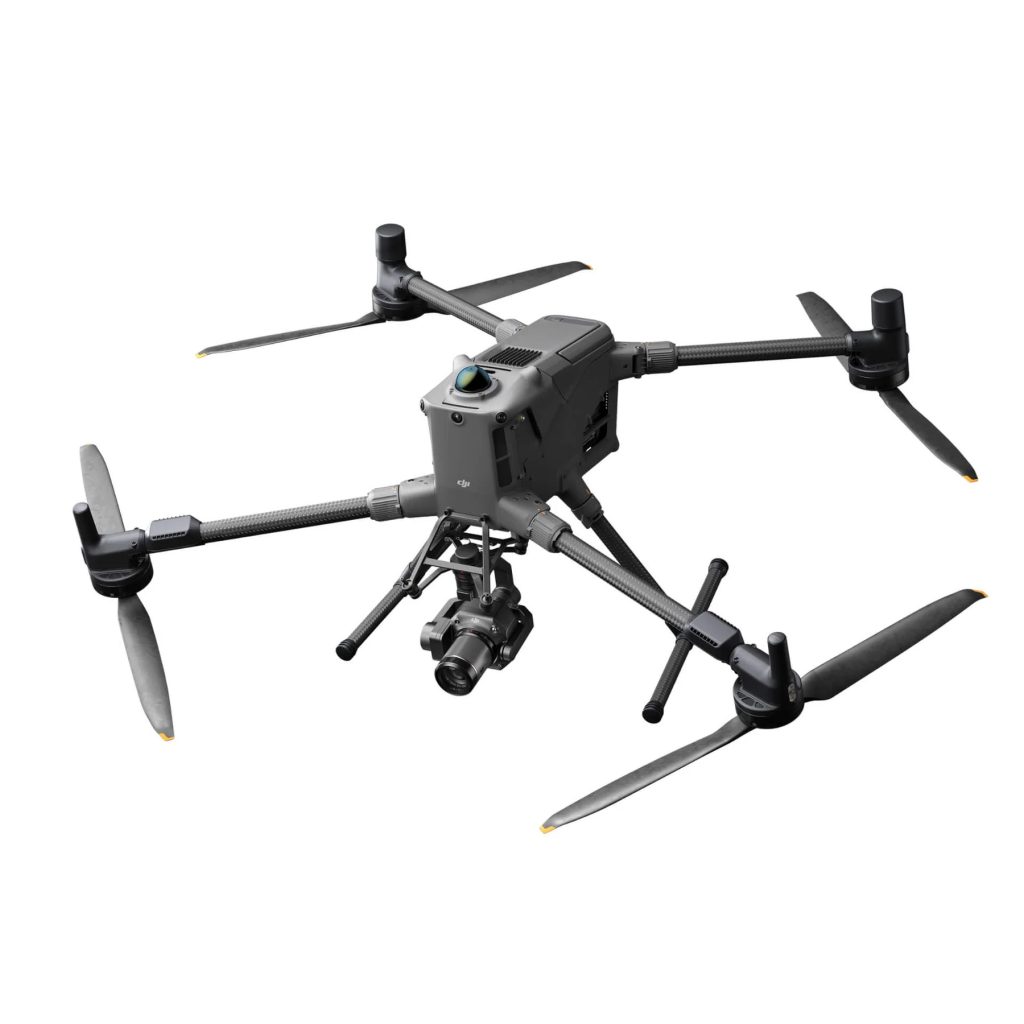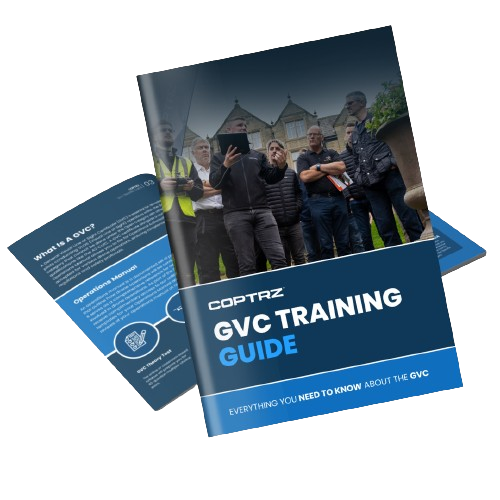
The UK Civil Aviation Authority (CAA) has released its 2025/26 Scheme of Charges for drone operators, introducing a new fee structure that will take effect from April 1, 2025. This updated scheme brings significant changes, including higher charges for operational authorisations, the adoption of a new risk assessment methodology (UK SORA), and adjustments that affect both commercial and hobbyist drone users. In this blog post, we’ll break down the new fees, highlight key changes from previous years, explain the SORA framework, and discuss the implications for drone operators. We’ll also cover any exemptions or special provisions, share industry reactions, and briefly compare the UK’s approach with other countries.
Breakdown of the New Fee Structure (2025/26)
Under the 2025/26 Scheme of Charges, drone operators in the Specific Category (i.e. those who require explicit authorisation for operations beyond the basic “Open” category rules) will face a new tiered fee structure. Here’s a summary of the key charges for operational authorisations and risk assessments:
- PDRA-01 Operational Authorisation (Pre-Defined Risk Assessment 01): £500 per year (previously £234)
- Operating Safety Case (OSC) Authorisation (legacy system, until April 22, 2025): £2,314 initial for complex case 1 and £1,323 initial for simpler case 2, with a renewal fee of £662 in both cases
- Light UAS Operator Certificate (LUC): £6,622 initial application; £2,314 for annual renewal
- Special UAS Project Authorisation: £2,314 (one-time charge for unique or novel projects; no annual renewal)
- Administrative Changes: £108 for issuing a duplicate authorisation document or processing an administrative variation (e.g. change of operator name)
- Technical Variation to an Authorisation: £827 if you need a technical change to an existing OSC or equivalent authorisation (e.g. altering operating parameters)
- Regulatory Advice: £330 for formal CAA regulatory advice or guidance beyond an initial free consultation (90 minutes are free, then hourly charges apply)
New SORA-Based Categories (from April 23, 2025): The biggest change is the transition to the Specific Operations Risk Assessment (SORA) model. Under SORA, operational authorisations are classified by risk level (called SAIL levels I to VI). The fees for SORA-based applications are higher than the old OSC system, especially for complex operations:
- PDRA under SORA: Two types of PDRA applications will exist: PDRA (Declarative): £500 initial and £500 annual renewal
- SORA Operational Authorisation by SAIL level: SAIL I (very low risk): £2,185 initial, £2,185 renewal
- Alternative Means of Compliance (AltMoC) Authorisation: £2,185 initial, £2,185 renewal
- Light UAS Certificate (LUC) under SORA: Remains £6,622 initial and £2,314 renewal
- Excess Hourly Charges: For complex SORA applications (SAIL II and above), if the CAA’s processing time exceeds what the initial fee covers, additional hours are billed at £330 to £496 per hour
In summary, the new scheme introduces a tiered pricing: low-risk standard scenarios (PDRA declarative) remain relatively low cost, while more complex or higher-risk operations see steep fees in the thousands of pounds. The intent is that the fee corresponds to the level of effort and scrutiny the CAA must apply for higher-risk operations.
Key Changes from Previous Years and Their Implications
The 2025/26 scheme marks some major changes compared to the previous charging structure:
- PDRA-01 Fee More Than Doubled: The annual fee for a standard Operational Authorisation (PDRA-01, previously the go-to authorisation for 95% of operators) jumps from £234 to £500
- Introduction of SORA Fees: Under the old scheme, most non-standard operations were handled via an Operating Safety Case (OSC), which cost between ~£1.3k and £2.3k initially (plus £662 for renewal)
- New PDRA Categories: Aside from PDRA-01, the CAA indicates it will introduce additional PDRAs. However, the cost for any new PDRA (beyond PDRA-01) is set at £2,185
- Annual Renewals vs One-off Fees: Previously, an OSC was an annual authorisation you could renew for a smaller fee. With SORA, the concept of renewal still exists but may work differently. The scheme implies that if no technical changes, you pay the same fee again for renewal (especially for SAIL I/II, which list renewal equal to initial)
- Hourly Rate Increases: The scheme’s hourly charge rates (for work beyond standard scope) are very high – £330 to £496/hr as noted. ARPAS-UK, the drone industry association, points out that even the lower end (£312+ per hour) is more than what many drone companies pay their skilled staff, and far above typical hourly consultancy rates in the sector
- Registration Fee Adjustment: For recreational and open-category operators, the mandatory registration fee (which is part of the CAA’s Article 14 “Drone and Model Aircraft Registration and Education Scheme”) will increase slightly, though not as dramatically as the specific category fees. The annual operator registration fee is rising from £10 to £11.79 per year
Implications: These changes mean that operating a drone commercially in the UK will become more expensive in 2025. A sole trader or small business doing simple drone jobs (e.g. photography or basic surveying) under PDRA-01 will need to budget £500 each year just for the authorisation. Companies or innovators looking to push into advanced operations (like beyond visual line of sight or flights in urban areas) will face hefty upfront costs to get the necessary approvals – potentially tens of thousands of pounds for cutting-edge use cases. The CAA justifies the increases by citing the need to fund the new digital application platform and SORA framework, ensuring it can properly assess higher-risk operations
However, the sticker shock has raised concerns that some operators may scale back their plans or seek alternatives.
Transition to the UK SORA Methodology (Specific Operations Risk Assessment)
One of the most consequential changes this year is the adoption of UK SORA (Specific Operations Risk Assessment) as the basis for evaluating drone operations in the Specific Category. This transition has both practical and financial effects on drone operators:
- What is SORA? The UK SORA is a risk-based assessment framework, adapted from the JARUS SORA model used internationally, for approving drone operations that fall outside the basic open category rules
- SORA Replaces the OSC/OSC System: Before SORA, UK operators used an Operating Safety Case (OSC) to apply for any operation not covered by a standard permission (like PDRA-01). The OSC process was somewhat open-ended: applicants would submit a detailed safety case, and the CAA would evaluate it on a case-by-case basis. Starting April 23, 2025, OSC applications will no longer be accepted, as SORA takes over
- Digital Platform (DSCO): Alongside SORA, the CAA is launching a digitised application platform known as DSCO (Digitising Specific Category Operations)
- Impact on Operators: For drone operators, shifting to SORA means learning a new system of application. You’ll need to understand which SAIL level your operation falls into and ensure your application addresses all the required mitigations for that level. The CAA has published guidance on SORA and will likely provide tools via DSCO to help classify your operation. In many cases, low-risk operations that were straightforward under the old scheme (like a standard PfCO-type operation) will continue to be straightforward under SORA (likely SAIL I or a declarative PDRA if it’s a common scenario). However, operations that push into new territory (e.g. flying beyond visual line of sight, higher altitudes, heavier drones, or near people) will now require going through SORA, which might be more involved in terms of documentation and comes with higher fees as noted. The CAA asserts that in the long run, SORA will benefit operators by allowing more complex operations to be approved in a consistent way
- Transition Period: There is a brief transition period in early April 2025. From April 1 to April 22, 2025, the new fees apply to the existing OSC/PDRA framework (so PDRA-01 becomes £500 immediately on April 1)
Impact on Commercial and Recreational Drone Users
The fee increases and SORA transition affect different segments of the drone community in different ways:
- Commercial Operators (Specific Category): This group feels the changes most directly. Virtually all commercial operators who fly drones heavier than 250g or for purposes beyond basic hobby use were required to have either a PfCO (Permission for Commercial Operation, pre-2021) or an Operational Authorisation (under PDRA-01, post-2021). For these operators: The annual cost to stay authorised has more than doubled (from £234 to £500)
- Recreational Users (Open Category): Hobbyist drone flyers who stick to the Open Category rules (flying small drones, or larger drones in unrestricted areas, below 120m/400ft, within visual line of sight, and not for paid work) will not need an Operational Authorisation at all, and therefore won’t be directly impacted by the hefty fees above. The main requirement for recreational pilots is to register as a drone operator (if their drone is 250g or more, or has a camera) and to pass a basic online education test. The registration fee increase from £10 to ~£11.79 affects them, but only marginally
- Enterprise and High-Risk Operators: At the other end of the spectrum, large enterprises (delivery companies, infrastructure inspectors, etc.) and tech firms pushing the envelope of drone capabilities are looking at SORA SAIL V/VI operations – things like drone deliveries in urban environments, drone taxis, or long-range beyond line of sight across populated areas. For these players, the absolute cost is high (tens of thousands in fees) but likely a smaller fraction of their overall project budgets. They will factor regulatory fees into their costs of doing business. The concern here is not so much the affordability (big companies can pay £40k if needed) but the efficiency of the process: they want the SORA system to actually enable their complex operations in a reasonable timeframe. If a company pays £40k and then still waits a year for approval, that’s a problem. The CAA’s goal with SORA and the hefty fees is to have the resources to deal with such applications more promptly and thoroughly. If it works, the drone industry could see faster progress in advanced operations, which in turn could benefit society (e.g. medical drone deliveries, improved infrastructure monitoring, etc.). If it doesn’t, the UK risks those innovators looking to other countries with more agile or cheaper regulatory environments.
In short, commercial drone services will become more expensive to operate in the UK, and operators will need to plan for these costs. Recreational flying remains largely unaffected apart from minor fee tweaks, as long as one stays within the Open Category. The hope is that the higher fees translate into better CAA services (like quicker processing or more permissions granted for novel operations) – otherwise, operators may feel they’re paying more for the same or less.
Exemptions, Discounts, and Special Provisions in the New Scheme
The Scheme of Charges 2025/26 also outlines how certain special applications and circumstances are handled. Here are some notable points regarding exemptions and special provisions:
- Exemptions (Article 71): If a drone operator needs an exemption from a legal requirement – for example, an exemption from a particular rule in the drone regulations – they must apply under Article 71 of the UK regulations. The scheme includes charges for such exemption requests
- Alternative Means of Compliance (AltMoC): The CAA allows applicants to propose an alternative means of compliance for regulatory requirements – essentially saying “we have another way to achieve the same safety outcome.” These applications are treated on par with SORA applications. The fee for an AltMoC application in the specific category is £2,185 (initial and renewal)
- Recognised Assessment Entities (RAEs): The scheme also sets charges for RAEs, which are the training organisations that can assess pilots for certificates like the A2 Certificate of Competency or other drone pilot qualifications. While this is slightly tangential to “operators” (it’s more about the training sector), it’s worth noting that those fees saw increases too. For example, ARPAS-UK noted that RAE Level 1 initial charges would increase by ~43% under the proposals
- Copies of Documents: If you need extra copies of certificates or documents, there are small administrative fees (often around £20-30) – the scheme lists these under a general “copies of documents” section. These remain relatively minor.
- Work Outside the UK: If you require the CAA to do something that involves work outside the United Kingdom (for instance, certification flights or inspections abroad), the scheme has an additional charge to cover those extra costs
- Payment Terms and Discounts: The CAA’s scheme typically operates on a cost recovery basis and does not offer discounts for small businesses or individuals – everyone pays the same standard charges. There are no explicit discounts for startups, volume of applications, or the like. However, one indirect “savings” mechanism is that the first 90 minutes of CAA regulatory advice is free
- Article 16 Authorisations (Model Clubs): As mentioned, associations can obtain a blanket authorisation for recreational model flying. The scheme lists the fee for an Article 16 authorisation application as £2,317, with a renewal fee of £663
- No-Fee Scenarios: One common question is whether there are any types of drone operations that can get authorisation for free. Under the new scheme, essentially no – any operation that requires CAA permission has an associated charge. The only truly “free” drone operations are those that fit entirely within the Open category (just requiring the free online test and the small registration fee). Even renewals cost the same as initial applications in most SORA cases, so operators can’t expect a discount on repeat business with the CAA. One exception might be if the CAA were to introduce a “standard scenario” declaration process (similar to EASA’s standard scenarios) – a declaration in EASA countries often just has a nominal processing fee. The UK’s version of that is PDRA-01 (and any future PDRAs deemed declarative) which is set at £500. So, while not free, that is the lowest it gets for a specific-category operation.
In summary, the scheme is quite comprehensive and strict about applying charges whenever the CAA’s involvement is required. Drone operators should budget for these fees as part of their project costs. Also, it’s wise to stay within standard procedures (like using PDRA-01 if it fits your operation) rather than seeking exemptions or alternative approaches, unless absolutely necessary, because straying from the beaten path tends to incur higher fees. Always check the latest CAA guidance – sometimes new standard scenarios or PDRAs might be introduced that could cover your use-case more cheaply than a full SORA application.
Industry Reactions and Expert Insights
The drone industry’s response to the 2025/26 charges has been vocal. ARPAS-UK, the national drone association representing professional operators, has expressed strong concerns about both the magnitude of the fee increases and the potential consequences:
- “Significant and Disproportionate”: In its formal response to the CAA’s consultation, ARPAS-UK argued that the proposed increases were excessive and out of line with principles of fairness
- Rationale – DSCO Costs: ARPAS-UK acknowledges that the CAA has a reason for needing more revenue – notably the ongoing cost of the new DSCO digital platform. The CAA revealed (through the consultation) that DSCO will cost about £1.7 million per year to run
- SORA: Necessary but Pricey: ARPAS-UK and other experts agree that SORA is the right direction for safety and enabling advanced operations
- Call for Transparency: Another point raised by industry voices is the lack of detailed explanation accompanying the fee changes. ARPAS-UK noted that the CAA did not publish a clear breakdown of how the new fees were calculated or how they relate to actual CAA effort, beyond the broad justification of covering DSCO costs
- Risk of Reduced Compliance and Innovation: Some stakeholders fear unintended side effects. High costs may deter experimentation – a small business might not try a new type of operation if the fee to attempt it is too high, which in turn could slow the growth of the drone services market. Additionally, as mentioned earlier, there’s a fear that a subset of operators might try to operate without proper authorisation due to cost, which could undermine safety and fair competition. ARPAS-UK’s earlier commentary during the consultation bluntly warned that the proposals “will further push part of the community into hiding in the Open Category” (i.e., flying without needed Specific category approvals)
- Other Expert Opinions: Beyond ARPAS-UK, some drone businesses and commentators have shared their views: Drone training companies are concerned that significantly higher RAE fees will make it harder to offer affordable courses – if their CAA approval costs go up, course prices might follow, potentially reducing the number of new pilots getting qualified. Established enterprise operators (e.g., large surveying firms or media companies) have commented that while they can afford the new fees, they expect better service in return. “If we’re paying double, we hope applications are processed in half the time,” said one operator at a recent webinar (anecdotally). Speed and efficiency from the CAA will be closely watched. International drone service providers looking at the UK market may factor these regulatory costs into consideration. A company from the US or EU wanting to set up a UK branch will note that just obtaining the necessary UK approvals could be a significant upfront expense, which might influence where they invest first.
- CAA’s Response: The CAA, for its part, has maintained that the charges are set according to the principle of cost recovery and that they “remain broadly appropriate” to cover the services provided
In essence, the industry reaction is mixed: acceptance of SORA’s safety rationale, but concern and disappointment at the financial burden placed on operators. The coming year will be a critical test of how the new system works in practice. Industry groups like ARPAS-UK will likely continue to engage with the CAA, monitoring the impact and advocating for any necessary adjustments (perhaps new low-risk PDRAs, flexible multi-site authorisations, or refined fee structures) to ensure the UK drone sector remains vibrant and compliant.
How the UK’s Charges Compare Internationally
Are the UK’s drone regulatory charges high, low, or average compared to other countries? A direct comparison is complex because different countries have different regulatory models, but a few contrasts can be drawn:
- United States: In the U.S., the Federal Aviation Administration (FAA) handles drone regulation quite differently. Commercial drone operators in the U.S. do not need an annual operational authorisation akin to the UK’s PDRA. Instead, they must obtain a Remote Pilot Certificate (Part 107 license) and then follow the Part 107 rules. The cost to become a certified drone pilot in the US is relatively low: the Part 107 knowledge test costs about $175 (≈£140) one-time, and the certificate is valid for 5 years (with free online renewals introduced recently). There is no recurring annual fee to the FAA for operating. If a pilot needs to do something outside Part 107 rules (like fly at night or over people, prior to recent rule updates), they apply for a waiver, which has no fee to apply – it’s a time investment, but not a financial one. Even drone registration in the US is dirt cheap: $5 for 3 years
- European Union (EASA countries): EU member states follow EU Regulation 2019/947, which also defines Open, Specific, and Certified categories for drones. However, the way fees are administered is up to each country’s aviation authority. Many EU countries have introduced Standard Scenarios (STS) or Predefined Risk Assessments (PDRA) that operators can use. In the EU, a standard scenario can be conducted by simply submitting a declaration to the authority, rather than asking for a full authorisation. Some countries charge a small processing fee for these declarations, while others charge nothing. For example, Spain does not charge anything for a drone operator registration or basic applications – registering as an operator with the Spanish aviation authority (AESA) is free of charge and online
- Canada: Transport Canada requires drone pilots to get a pilot certificate (Basic or Advanced) and for advanced operations, to seek SFOCs (Special Flight Operations Certificates) for things beyond the scope of the basic rules. The pilot certificate exams cost about CAD $10 online for Basic and $25 for Advanced (negligible amounts), and SFOCs historically have had no service charge – they’re application-based like FAA waivers (this could change, but as of recent years, Canada did not levy large fees on SFOC applicants). Again, Canada’s model is more taxpayer-funded for the regulator’s work.
- Australia: The CASA in Australia has more of a cost-recovery model somewhat closer to the UK. Commercial operators there often obtain a Remote Operator’s Certificate (ReOC) and Remote Pilot Licences (RePL). CASA charges fees for ReOC assessment (on the order of AU$1,600+ for an initial application) and other services. There are also fees for certain waivers or approvals. Still, an individual operator in Australia flying under the excluded category or holding just a basic ReOC might be paying less annually than a UK operator with a PDRA-01. Australia’s fees, while not trivial, haven’t seen the kind of jump that the UK just implemented for 2025.
- Global Competitiveness: The concern for UK plc (so to speak) is whether these higher charges could deter international drone investment or make UK companies less competitive when bidding on projects. If a UK company has to factor in a £3,500 regulatory fee for a job and a European company does a similar job under a simple declaration that cost €0-50, the UK company starts at a cost disadvantage. Of course, regulatory costs are just one factor and the UK does offer an English-speaking environment with a clear regulatory framework, which some companies prefer. But it’s something to watch. We might see, for example, a UK-based drone delivery startup considering tests abroad where the regulatory hurdles (and costs) are lower before coming back to the CAA for full authorization of services.
It’s worth noting that many countries are also updating their fees as drone usage grows. The European Aviation Safety Agency (EASA) is reviewing its fees and charges regulations for 2026 which could introduce more standardised charges across Europe, and possibly fees for things that were free before. So the landscape is evolving. But as of 2025, the UK’s scheme stands out for instituting steep charges to drone operators where other countries have largely kept direct fees modest or subsidised.
In fairness, direct comparisons can be imperfect. The UK is building a comprehensive system (SORA + digital platform) that some countries have yet to implement. The value of an approval is also different – a UK Operational Authorisation (especially under SORA) might grant broader privileges than, say, an FAA waiver which is very specific. So operators get what they pay for in some sense. Nonetheless, if cost is a primary concern, the UK is on the higher end of the spectrum among Western nations for drone regulatory fees.
Conclusion
The CAA’s 2025/26 Scheme of Charges marks a pivotal point for drone regulation in the UK. It brings the country to the forefront of adopting a risk-based framework (UK SORA) that can unlock advanced drone operations, but it also shifts more of the cost burden onto operators to fund this enhanced system. Drone professionals in the UK will need to adapt, budgeting for higher fees and navigating the new SORA application process. For those just starting or operating on thin margins, the changes might feel discouraging, but it’s important to remember that a well-structured regulatory environment can also create new opportunities – for example, if SORA enables routine BVLOS flights, operators who invest in that capability could offer new services that justify the costs.
If you’re a drone operator, here are a few takeaways and tips moving forward:
- Stay Informed: Read up on the UK SORA guidance material. Knowing what SAIL category your operation falls into will help you anticipate the necessary mitigations and fees.
- Plan Financially: Factor in the CAA charges when pricing your services. Clients and stakeholders should be made aware that regulatory compliance has a cost. It’s part of operating professionally and safely.
- Use Standard Scenarios if Possible: If your operation can fit under PDRA-01 or any new PDRA that the CAA offers, using those will usually be cheaper and simpler than a full-blown SORA application. They exist to cover common use cases – take advantage of them.
- Engage with the Community: Through groups like ARPAS-UK or local drone clubs, share feedback on the new system. If certain aspects are not working well or fees are creating unintended barriers, a collective voice is more likely to influence future adjustments.
- Explore Innovations in a Controlled Way: The high fees for top-tier SORA levels indicate those are meant for serious, well-funded projects. If you have a novel idea (say, drone swarms for agriculture or long-range deliveries), consider partnering with larger entities or seeking funding that can cover regulatory costs, rather than trying to shoulder it alone. There are also sandbox initiatives and trials (sometimes government-supported) that might offset some compliance costs.
- Compliance is Still Key: Despite the costs, operating with the proper authorisation is the right (and legal) thing to do. The CAA’s enforcement hasn’t been heavy-handed historically, but with the new system, they will likely be keeping a close eye on unauthorised operations, especially those that should obviously have a SORA-level permission. The fines and liabilities of illegal operations far outweigh the fees.
The bottom line is that the UK is investing in a robust regulatory framework for drones, and it’s asking the industry to invest alongside it through higher fees. Time will tell how this balance plays out – whether it spurs a golden age of advanced drone operations or causes friction for the nascent drone economy. As a drone operator, being informed and prepared is your best strategy in this new era. Safe flying, and here’s to hoping the new system delivers value for the money we’re collectively putting into it!
Download our FREE GVC Training Guide
Learn everything you need to know about becoming a drone pilot with our GVC training guide.
- Get a full course roadmap to understand every step of the journey
- Contains clear answers to all of the frequently asked questions
- Get a transparent and comprehensive breakdown of course costs



